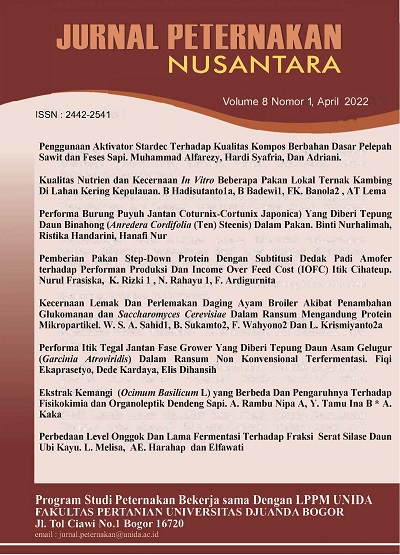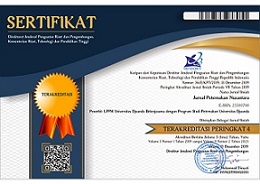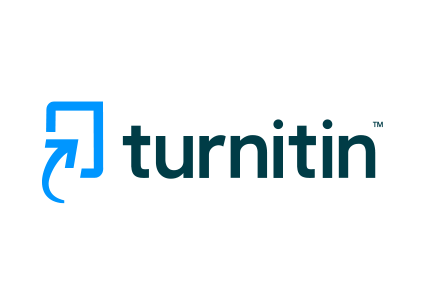PERBEDAAN LEVEL ONGGOK DAN LAMA FERMENTASI TERHADAP FRAKSI SERAT SILASE DAUN UBI KAYU
DOI:
https://doi.org/10.30997/jpn.v8i1.5282Abstract
One alternative agricultural waste that can be used for ruminant feed, especially in the dry season, is cassava waste with of silage. This study aims to determine the quality of the fiber fraction contained in the silage of cassava leaves with the addition of different levels of cassava flour and fermentation. This research used a factorial completely randomized design (CRD) with two treatment factors. Factor A (added level of cassava waste consists 0%, 25% and 50%) and factor B (fermentation time consists 0, 14 and 28 days). The parameters measured were the composition of the fiber fraction including Neutral Detergent Fiber (%), Acid Detergent Fiber (%), Acid Detergent Lignin (%), hemicellulose and cellulose (%). The results of this study indicate that there is an interaction between the addition of cassava waste levels and different fermentation times on the content of the fiber fractions of NDF, ADF, ADL, Hemicellulose and Cellulose. It can be concluded that the addition of 25% cassava waste level and 28 days of fermentation time can improve the quality of cassava silage fiber fraction
Downloads
Downloads
Published
How to Cite
Issue
Section
License
Copyright (c) 2022 Anwar Efendi Harahap

This work is licensed under a Creative Commons Attribution 4.0 International License.
Authors who publish with Jurnal Peternakan Nusantara agree to the following terms:
- Authors retain copyright and grant the journal right of first publication with the work simultaneously licensed under a Creative Commons Attribution 4.0 International License that allows others to share the work with an acknowledgement of the work's authorship and initial publication in Jurnal Peternakan Nusantara.
- Authors are able to enter into separate, additional contractual arrangements for the non-exclusive distribution of the journal's published version of the work (e.g., post it to an institutional repository or publish it in a book), with an acknowledgement of its initial publication in Jurnal Peternakan Nusantara.
- Authors are permitted and encouraged to post their work online (e.g., in institutional repositories or on their website) prior to and during the submission process, as it can lead to productive exchanges, as well as earlier and greater citation of published work.










